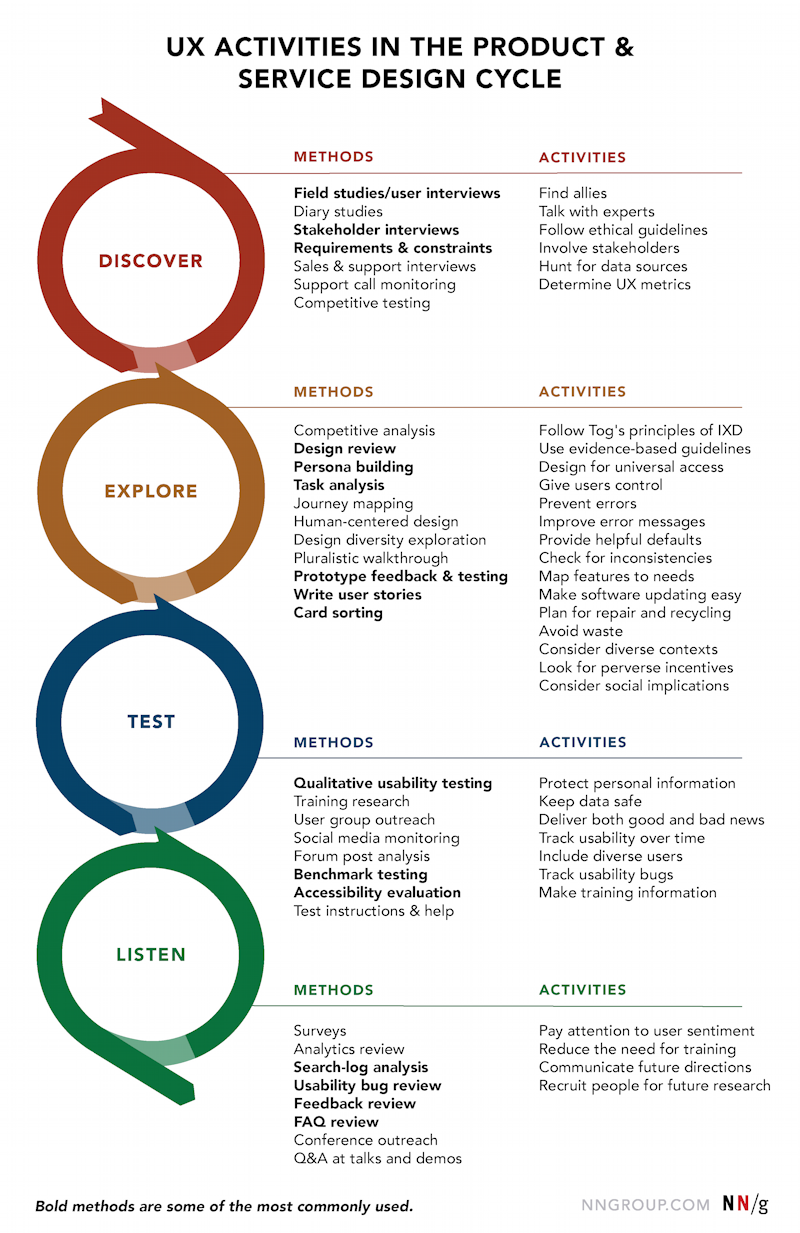Formative usability testing is a process of testing during the development of a product in order to identify areas that need improvement.
Summative usability testing is a process of testing after the development of a product in order to determine how well it works. Both are important in order to create a successful product.
There are many different ways to conduct formative and summative usability testing. This guide will provide an overview of the most common methods so that you can choose the best approach for your needs.
- Interviews.
- Focus groups.
- Surveys.
- User studies.
- Heuristic evaluations.
- Expert reviews.
- User stories.
- Prototypes.
Each of these methods has its own advantages and disadvantages, so it is important to choose the right one for your specific situation.
1. Interviews are a good way to get detailed feedback from individual users. They can be conducted in person or over the phone, and they can be either structured or unstructured. However, interviews can be time-consuming and expensive, and it can be difficult to get a representative sample of users.
2. Focus groups are similar to interviews, but they involve a group of people instead of just one. This can be beneficial because it allows for more ideas to be generated and for different points of view to be heard. However, focus groups can also be costly and time-consuming, and there is a risk of groupthink.
3. Surveys are a good way to collect data from a large number of people quickly and cheaply. However, surveys can be biased if the questions are not well-designed, and it can be difficult to get people to respond to them.
4. User studies are a more in-depth form of research that involves observing users as they use a product. This can be beneficial because it allows researchers to see how users actually interact with the product, but user studies can be time-consuming and expensive.
5. Heuristic evaluations are a type of expert review in which usability experts evaluate a product against a set of guidelines. This can be useful for identifying potential usability problems, but it is important to use experienced evaluators and to have a clear understanding of the guidelines being used.
6. Expert reviews are similar to heuristic evaluations, but they do not use a set of guidelines. Instead, experts simply provide their opinions on the product. This can be beneficial because it allows for more flexibility, but it can also be less reliable because there is no standard against which to judge the product.
7. User stories are brief descriptions of how users will interact with a product. They can be useful for identifying potential usability problems and for planning user tests. However, user stories are often too simplistic to be really useful, and they can be time-consuming to create.
8. Prototypes are models of products that can be used to test how users will interact with them. They can be either low-fidelity (simple) or high-fidelity (complex), and they can be either interactive or non-interactive. Prototypes are often used in user studies, but they can also be used in other types of usability testing.
Choosing the right method of formative and summative usability testing is important for ensuring that your product is successful. Be sure to consider all of the options and choose the one that best suits your needs.
Here’s a list of user research methods from NNGroup:


Table of Contents
What Are The Four 4 Principles Of Usability Testing?
1. Principle Of Usefulness
The first principle of usability testing is usefulness. This means that the test must be relevant and useful to the users in order for it to be effective.
The test must provide information that is important to the user and that can help them improve their experience with the product or service.
2. Principle Of Simplicity
The second principle of usability testing is simplicity. This means that the test should be easy to understand and use.
It should be designed in a way that is simple and straightforward so that users can easily navigate through it and find the information they need.
3. Principle Of Feedback
The third principle of usability testing is feedback. This means that the test should provide users with feedback on their performance.
This feedback should be immediate so that users can see how they are doing and what they need to improve.
4. Principle Of Efficiency
The fourth and final principle of usability testing is efficiency. This means that the test should be designed in a way that allows users to quickly and easily find the information they need.
The test should be easy to use and navigate so that users can get the information they need without spending too much time or effort.
By following these four principles, you can ensure that your usability testing is effective and provides valuable information to your users.
Usability testing is an important part of any product development process, and by following these principles, you can make sure that your tests are useful and informative.
What Are Some Common Pitfalls To Avoid During Formative Usability Testing, And How Do You Mitigate Them Effectively?
When conducting formative usability testing, there are a few common pitfalls that can trip up even the most experienced researcher. Here are four of the most common pitfalls, and how you can avoid them:
1. Not Asking The Right Questions
One of the most common pitfalls in formative usability testing is not asking the right questions. It’s important to ask questions that will surface issues and allow you to gather data that can be used to improve the design.
Avoid general questions like “what do you think of the design?” or “how easy was it to use?” Instead, focus on specific tasks and ask questions that will help you understand why users had difficulty with certain areas of the design.
2. Not Giving Users Enough Time
Another common pitfall is not giving users enough time to complete tasks. When time is limited, users may rush through tasks and not provide accurate or complete information. Make sure to give users plenty of time to complete tasks, and be patient if they need to take a break.
3. Not Observing Nonverbal Cues
In addition to listening to what users say, it’s important to pay attention to their nonverbal cues. This can be anything from body language to tone of voice.
Observing nonverbal cues can help you surface issues that users may not be aware of or may not want to vocalize.
4. Not Analyzing The Data
Finally, one of the most common pitfalls is not analyzing the data gathered during formative usability testing.
It’s important to take the time to review the data and identify areas of improvement. Without analysis, it’s difficult to make informed decisions about design changes.
Avoiding these common pitfalls will help you conduct more effective formative usability testing and gather actionable insights that can be used to improve the design.
How Can You Ensure That Your Product Is Ready For Summative Usability Testing, And What Are The Benefits Of Conducting Such Tests?
It is important to ensure that your product is ready for summative usability testing before conducting the test. There are a few things you can do to prepare:
- Make sure your product is stable and there are no known major bugs. If there are, fix them before proceeding with the test.
- Choose a representative sample of users who match your target audience in terms of demographics and user type.
- Create a clear and concise test plan that outlines the goals and objectives of the test, as well as what you want to learn from it.
- Prepare all necessary materials in advance, such as the test scenarios, tasks, and any supporting documentation.
- Make sure you have a dedicated team in place to execute the test and collect the data.
Once you have prepared for the test, you can start conducting it. There are a few things to keep in mind during the test:
- Be clear and concise in your instructions to participants.
- Make sure you give participants enough time to complete each task.
- Do not lead participants by giving hints or clues on how to complete the tasks.
- Be flexible and adaptable to changes during the course of the test.
- Take detailed notes on what participants do and say during the test.
After the test is complete, you will need to analyze the data you collected and prepare a report. The report should include an overview of the test, the goals and objectives, the methodology, the results, and your recommendations.
Summative usability testing can be a valuable tool in ensuring that your product is user-friendly and meets the needs of your target audience.
When conducted properly, it can provide insights that can help you improve the design and functionality of your product. Conducting such tests can also help you build credibility with potential customers and partners.
Conclusion
Now that you understand the basics of formative and summative usability testing, it’s time to put this knowledge into practice.
As you begin conducting tests with your target users, keep in mind the four principles of usability testing and avoid common pitfalls. And finally, remember that a successful product is always ready for a final round of user feedback before launch.




